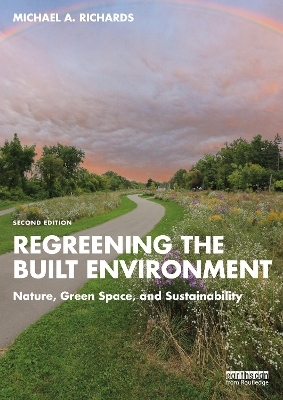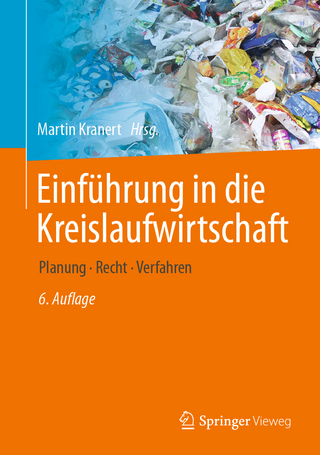
Regreening the Built Environment
Routledge (Verlag)
978-1-032-66859-8 (ISBN)
Now in its second volume, Regreening the Built Environment provides an overview of physical and social environmental challenges that the planet is facing and presents solutions that restore ecological processes, reclaim open space, foster social equity, and facilitate a green economy.
Healing the planet requires a combination of strategies networked across multiple scales of development, including buildings, sites, communities, and regions. Case studies from a range of locations in the United States, Denmark, Vietnam, Germany, South Korea, Switzerland, France, and the United Kingdom, among others, demonstrate how existing gray infrastructure can be retrofitted with green infrastructure and low-impact development techniques. From this, the author shows how a building can be designed that creates greenspace or generates energy; likewise, a roadway can be a parkway, an alley can be a wildlife corridor, and a parking surface can be a garden. This new edition also includes case studies that have successfully reconnected communities that were fragmented by unjust planning practices and irresponsible patterns of development, resilient design solutions in response to natural disasters, passive design strategies that can make interior spaces more efficient and healthier, and expanded discussions on capturing carbon, renewable energy, agriculture, waste, public transit, and adaptive reuse, including innovative ideas on how to reimagine the shopping mall in the era of e-commerce.
The strategies presented in this book will stimulate discussions within the design profession and will be of great interest to students and practitioners of environmental studies, architecture, landscape architecture, and urban design.
Michael A. Richards, B.S., M.Arch., Ph.D., has spent much of his career exploring ways to integrate environmental sensibility into the built environment. He has worked as a planner, designer, researcher, and teacher at several colleges and universities, including the University at Buffalo, Buffalo State University, the University of Vermont, Vermont Technical College, Erie Community College, and the Community College of Vermont. In addition to this book series, he is the author of the science fiction novel, Dream Makers, which tells the story of a distraught architecture student who can alter the past, present, and future by manipulating his dreams.
1. Introduction: a new paradigm for the built environment 2. Green principles and terminology 3. Why regreen the built environment? 4. Planning strategies and tools 5. Energy, carbon capture, food, waste 6. Transportation 7. Roadways and parking 8. Corridors and greenways 9. Buildings and rooftops 10. Adaptive reuse 11. Interiors 12. Alternative sites 13. Implementing regreening strategies 14. Conclusion
| Erscheinungsdatum | 21.09.2024 |
|---|---|
| Zusatzinfo | 5 Tables, black and white; 15 Line drawings, black and white; 91 Halftones, black and white; 106 Illustrations, black and white |
| Verlagsort | London |
| Sprache | englisch |
| Maße | 174 x 246 mm |
| Gewicht | 650 g |
| Themenwelt | Naturwissenschaften ► Biologie ► Ökologie / Naturschutz |
| Naturwissenschaften ► Geowissenschaften ► Geografie / Kartografie | |
| ISBN-10 | 1-032-66859-8 / 1032668598 |
| ISBN-13 | 978-1-032-66859-8 / 9781032668598 |
| Zustand | Neuware |
| Informationen gemäß Produktsicherheitsverordnung (GPSR) | |
| Haben Sie eine Frage zum Produkt? |
aus dem Bereich


